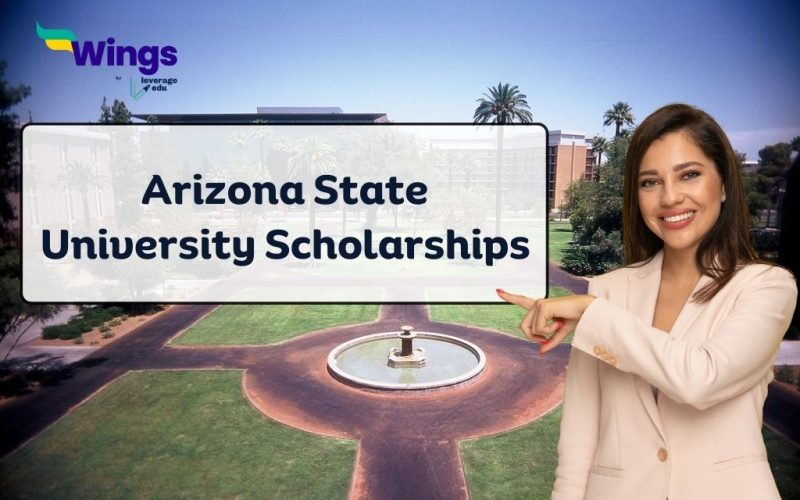I remember standing there, a high school diploma clutched tight in my hand, feeling a mix of immense pride and a deep, gnawing worry. The dream of college, of learning, growing, and becoming someone I only vaguely imagined, was vivid. But so was the stark reality of the price tag. My family, bless their hearts, worked incredibly hard, but the thought of adding a massive college debt to their burden felt crushing. For a long time, I just assumed higher education was for those with deep pockets, or for the truly exceptional, the kind of genius that wins national science fairs. I was just… me. A decent student, yes, but not a prodigy. And then, one rainy afternoon, a counselor at school, Ms. Evelyn, pulled me aside. She looked at me over her glasses and said, "You know, there are ways. Many ways. Have you looked into state university scholarships?"
That simple question, dropped casually into my world, was like a tiny seed taking root. State university scholarships. The words sounded official, perhaps even a bit daunting, but they also held a glimmer of hope. Before that conversation, my understanding of financial aid was vague at best. Loans, maybe a small grant here and there – that was the extent of my knowledge. Ms. Evelyn, sensing my hesitation, leaned forward and began to tell me about students just like me, students who had walked through her office doors, unsure and overwhelmed, only to emerge years later with degrees in hand, thanks to opportunities they hadn’t even known existed. She spoke not of a magic wand, but of persistence, careful searching, and a willingness to tell your own story.
My journey began right there. I started by looking at the state universities I was interested in. Not just their shiny brochures with happy students on sprawling green lawns, but their financial aid sections. This was where the real work began, and let me tell you, it felt like learning a whole new language. Every university seemed to have its own unique set of programs, deadlines, and requirements. It wasn’t a one-size-fits-all solution, and that was the first big lesson I learned. You see, when we talk about state university scholarships, we’re not talking about a single, monolithic thing. We’re talking about a vast landscape of possibilities, each with its own specific criteria, funded by various sources – the state itself, the university’s own endowment, specific departments, alumni groups, and even local businesses tied to the university.
I remember spending countless evenings hunched over my old laptop, clicking through endless pages. It felt like a treasure hunt without a map. But gradually, patterns began to emerge. There were scholarships based purely on academic merit – your GPA, your test scores, the rigor of your high school courses. These were often awarded automatically upon admission if you met certain thresholds. Then there were need-based scholarships, designed for students whose families couldn’t cover the full cost of tuition. These required filling out the FAFSA, the Free Application for Federal Student Aid, which, if I’m honest, felt like a deep dive into my family’s entire financial history. It was personal, but absolutely necessary. Without that form, many doors would have remained closed.
Beyond these two main categories, I started discovering a whole world of niche scholarships. Scholarships for students pursuing specific majors, like engineering or nursing, which were often funded by industries eager to attract talent. Scholarships for students involved in community service, recognizing those who dedicated their time to making a difference. There were scholarships for leadership, for athletic talent, for artistic ability, for students from specific geographic regions, or even for those with particular heritage or backgrounds. I even stumbled upon one for left-handed students, though sadly, I am decidedly right-handed. The point is, if you have a unique quality, a specific passion, or a particular background, there’s likely a scholarship out there that aligns with it. It just takes digging.
My first few applications were, frankly, terrible. I wrote generic essays, listing my achievements without any real voice or personality. I asked teachers for recommendation letters without giving them much guidance, and I rushed through the forms. Unsurprisingly, the rejections started rolling in. Each one felt like a punch to the gut. I remember sitting there, staring at an email that politely informed me I hadn’t been selected, and thinking, "Maybe Ms. Evelyn was wrong. Maybe this isn’t for me." But something in me, a stubborn streak perhaps, pushed me to keep going. I went back to Ms. Evelyn, disheartened, and she just smiled. "Good," she said. "Now you know what doesn’t work. Let’s talk about what does."
She taught me the importance of tailoring each application. "Think of it like telling a story," she advised. "Every scholarship committee wants to know who you are, beyond your grades. What drives you? What challenges have you overcome? How will this scholarship help you achieve your unique goals?" This was a game-changer. Instead of just listing my volunteer hours, I started writing about the elderly woman I helped at the local soup kitchen, explaining how her stories had inspired me to consider a career in social work. Instead of a generic letter from a teacher, I asked my English teacher, who knew my passion for writing, to highlight my creativity and perseverance. I learned that an essay isn’t just a collection of words; it’s a window into your soul, a chance to connect with the people making these decisions.
The application process itself became a ritual. First, I’d make a detailed spreadsheet. Scholarship name, deadline, requirements, and a small box for "submitted." This helped me stay organized and not miss crucial dates. Deadlines, I learned the hard way, are absolute. Missing one by even a day often means your application isn’t considered. Next, I’d gather all the necessary documents: transcripts, test scores, a resume of my activities and awards. Then came the essays. Oh, the essays! Some asked for personal statements, others for responses to specific prompts. I learned to brainstorm, outline, and revise. I’d read them aloud, ask trusted friends or teachers to review them, and constantly ask myself: "Does this truly reflect who I am and why I deserve this?"
Recommendation letters were another key piece. I learned to ask teachers, counselors, or mentors who knew me well and could speak to my strengths, character, and potential. I’d provide them with a "brag sheet" – a summary of my achievements, goals, and the specific scholarships I was applying for. This made their job easier and ensured they could write a compelling letter that spoke directly to the scholarship’s criteria. And if an interview was required, I practiced. I researched the scholarship, understood its mission, and thought about how my experiences aligned with it. I dressed professionally, arrived early, and, most importantly, I was myself. Authenticity, I found, shines through.
It wasn’t just about the university’s own offerings, either. Ms. Evelyn also pointed me towards external scholarship databases and state-specific programs. Our state’s education department website, for instance, had a list of scholarships available to residents attending in-state universities, often with less competition than national awards. Websites like Fastweb, Scholarship.com, and the College Board’s scholarship search tool became my daily companions. These platforms allowed me to filter by criteria like major, location, ethnicity, and even unique hobbies. It felt like casting a wider net, increasing my chances of catching something.
One of the biggest lessons I learned was the power of persistence. It’s easy to get discouraged when you hear "no." But every "no" brought me closer to a "yes." It forced me to refine my approach, to improve my essays, to seek out better recommendations. It taught me resilience. I remember one scholarship I applied for, specifically for students interested in public service. I spent weeks crafting the essay, interviewing local politicians for insights, and getting a glowing letter from my debate coach. When the acceptance email came, it wasn’t just about the money; it was about the validation, the feeling that my hard work had finally paid off.
Beyond the initial application, I also learned that many state universities offer departmental scholarships after you’ve enrolled. Once you declare a major, your department might have its own pool of funds for students excelling in that field. So, the search doesn’t necessarily end the moment you step onto campus. Maintaining a good GPA, getting involved in departmental activities, and building relationships with professors can open up new scholarship opportunities even during your sophomore, junior, or senior years. It’s a continuous journey, not a one-time event.
The financial relief from these scholarships was immense. It meant I could focus on my studies, immerse myself in campus life, and pursue internships without the constant stress of how I would pay for next semester’s tuition. It allowed me to explore different subjects, join clubs, and make connections that enriched my entire university experience. It wasn’t just about covering tuition; it was about buying freedom – the freedom to learn, to grow, and to become the person I was meant to be.
For anyone out there feeling that same worry I felt, holding that high school diploma and wondering how to bridge the gap between dream and reality, please hear me: state university scholarships are real, they are abundant, and they are absolutely within your reach. Don’t let the paperwork or the fear of rejection stop you. Start early, research diligently, and most importantly, tell your story. Let your passion, your struggles, your unique perspective shine through. Every essay, every application, is a chance to advocate for yourself.
Remember, it’s not just about being the "best" student; it’s about being the right fit for a particular scholarship. Some committees are looking for academic excellence, others for leadership, some for community involvement, and many for a combination of factors. There’s a scholarship out there for every kind of student, for every journey. So, take a deep breath, open that browser, and start your own treasure hunt. The path to your higher education might just be paved with the very scholarships you’re about to uncover. Your future self, free from the crushing weight of debt, will thank you for every single hour you put into the search. It truly is one of the most worthwhile investments you’ll ever make.



